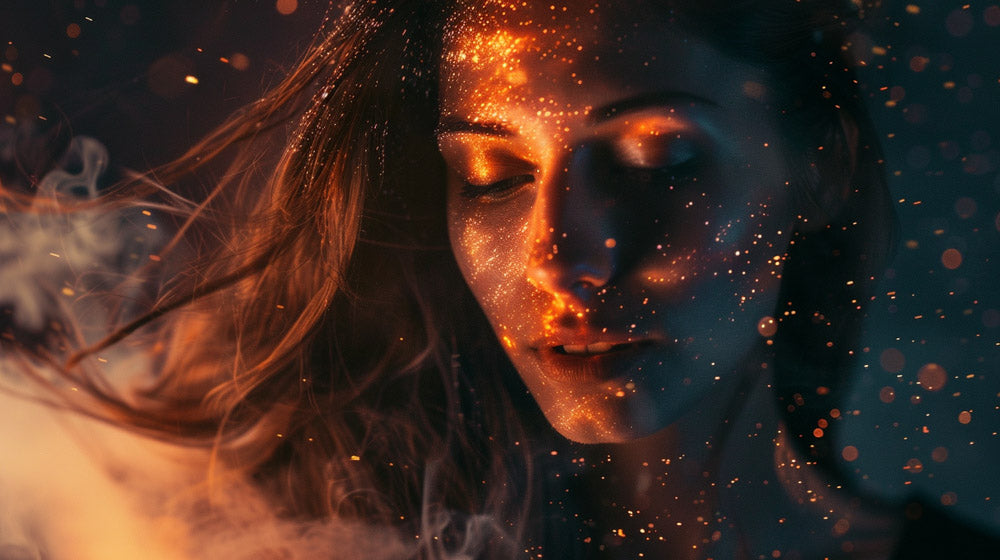What is the Exposure Triangle?
The Exposure Triangle explains the relationship between three essential elements: shutter speed, aperture, and ISO. These components work together to control the amount of light that reaches the camera sensor, influencing the exposure and overall look of the photograph.
[Place Image: Illustration of the Exposure Triangle]
Shutter Speed
Shutter speed determines how long the camera's shutter remains open, allowing light to hit the sensor. It's measured in fractions of a second, such as 1/250 or 1/60. A fast shutter speed can freeze motion, while a slow shutter speed can create motion blur, adding a sense of movement to the image.
Example:
- Fast Shutter Speed: 1/1000 - Great for capturing fast-moving subjects like sports or wildlife.
- Slow Shutter Speed: 1/30 - Ideal for low-light conditions or creating artistic blur effects.
Generative AI can simulate various shutter speeds to visualize how different settings impact your photos. By inputting descriptors like "fast shutter" or "motion blur," AI tools can generate images that demonstrate these effects.
[Place Image: Example of Fast Shutter Speed (e.g., a sports shot)]
[Place Image: Example of Slow Shutter Speed (e.g., a nighttime street scene with motion blur)]
Aperture
Aperture refers to the size of the opening in the lens through which light enters. It's measured in f-stops (e.g., f/2.8, f/5.6). A larger aperture (smaller f-stop number) allows more light in and creates a shallow depth of field, blurring the background. Conversely, a smaller aperture (larger f-stop number) lets in less light and increases depth of field, keeping more of the scene in focus.
Example:
- Large Aperture (f/2.8): Excellent for portraits with blurred backgrounds.
- Small Aperture (f/16): Suitable for landscape photography where you want everything in sharp focus.
Using generative AI, you can explore how different aperture settings affect the depth of field and exposure. Descriptors like "shallow depth of field" or "deep focus" help AI generate comparative images.
[Place Image: Example of Large Aperture (e.g., a portrait with a blurred background)]
[Place Image: Example of Small Aperture (e.g., a landscape shot with everything in focus)]
ISO
ISO measures the camera sensor's sensitivity to light. Lower ISO values (e.g., 100) are used in bright conditions to maintain image quality, while higher ISO values (e.g., 3200) are necessary for low-light situations but can introduce noise or grain into the photo.
Example:
- Low ISO (100): Best for sunny outdoor shots.
- High ISO (3200): Useful for indoor or night photography but watch for increased noise.
Generative AI can illustrate how varying ISO levels impact image quality. By specifying "high ISO" or "low ISO," AI-generated images can show the differences in noise and brightness.
[Place Image: Example of Low ISO (e.g., a bright outdoor shot)]
[Place Image: Example of High ISO (e.g., a night shot with visible noise)]
The Artistic Side of the Exposure Triangle
Understanding the Exposure Triangle not only helps in achieving correct exposure but also empowers photographers to make creative choices. Different combinations of shutter speed, aperture, and ISO can dramatically alter the mood and style of an image. For instance, a low shutter speed with a narrow aperture might create a moody, underexposed look, while a high ISO with a wide aperture can result in a bright, high-contrast image.
Generative AI plays a pivotal role in experimenting with these creative choices. By inputting specific descriptors, AI can generate images that reflect various artistic styles and techniques, helping photographers visualize and refine their creative vision.
[Place Image: Comparison of Artistic Styles (e.g., underexposed vs. overexposed images)]
Practical Application with Generative AI
Generative AI tools, such as those offered by MidJourney, allow photographers to input specific settings and descriptors to see how different configurations of the Exposure Triangle will affect their images. This technology provides a virtual sandbox for experimentation, making it easier to understand and master the interplay between shutter speed, aperture, and ISO.
Example Prompts for AI-Generated Imagery:
- "Portrait with shallow depth of field, f/2.8, fast shutter speed"
- "Landscape with deep focus, f/16, low ISO"
- "Night scene with high ISO, slow shutter speed, motion blur"
[Place Image: AI-Generated Examples Based on Prompts]
Conclusion
Mastering the Exposure Triangle is essential for any photographer looking to take control of their camera and create visually compelling images. By understanding and experimenting with shutter speed, aperture, and ISO, you can achieve the desired exposure and artistic effect. Generative AI enhances this learning process by providing immediate visual feedback, allowing you to explore and refine your photography skills.
Stay tuned for more articles in our series on mastering the fundamentals of photography with the help of generative AI. In the next installment, we will dive deeper into the specifics of shutter speed and its creative applications.
For more photography tips and tutorials, visit our Photography Fundamentals Blog.





















